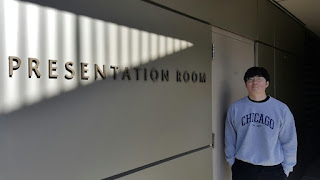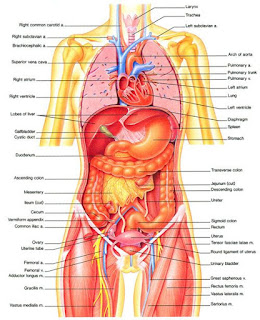Event 2
On
May 10th 2018, I went to LEONARDO ART SCIENCE EVENING RENDEZVOUS
(LASER) presentation by ARIEL LEVI SIMONS, KELLY NIPPER, JOHN HOOD, and MARU
GARCÍA. LASER (Leonardo Art Science Evening Rendezvous) Talks is Leonardo's
international program of evening gatherings that bring artists and scientists
together for informal presentations and conversations.
This
event helped me understand the more about the biotech + art ideas. When Maru
Garcia, Design Media Arts MFA Graduate Student, did her presentation, she
showed us very weird looking fluorescent object and bacteria genetic DNA
colorful art piece. This was relevant to week 6: biotech + art because Eduardo
Kac’s GFP bunny was injecting micro genes from fluorescent jellyfish to bunny
to make them light under the dark. Eduardo’s idea of making fluorescent bunny
is relevant to artistic work because nowadays there are many glow in the dark
products. I think those items are very cool and useful because in the dark,
with the glow-in-the-dark item, you can make party look fancier and found people
very easily.
After
looking at the picture above, I was quite amazed that how people can play with
science and make it look like an artistic work. The colors and patterns were
very balanced and splendid. Now that people can make science work artistic
work. Just as robots in the movie became practical in real life, I’m hoping
that these biology technologies can become more practical to people’s lives and
most importantly save many lives.
I
would recommend this event to our DESMA 9 classmates because not only you learn
about science + artistic work, but also you learn about how Artificial light at
night (ALAN) effects light pollution in coastal ecosystems. Ecologists face
challenges such as measuring light accurately and assessing how multiple
species behave in response. But early results suggest that light at night is
exerting pervasive, long-term stress on ecosystems, from coasts to farmland to
urban waterways, many of which are already suffering from other, more well-known
forms of pollution. People, including myself, nowadays know the problems of
excess of CO2 production; however, I did now know the problem of how ALAN
effects our ecosystems. Effects of light pollution on the health of wild
animals and threaten the 30% of vertebrates and 60% of invertebrates that are
nocturnal and exquisitely sensitive to light.
After
attending this event, for my next midterm or project, I want to focus more on
light system. Since I am an electrical engineering major, I want to combine electric,
light, and art together.
“GFP Bunny.” Stretcher, www.stretcher.org/features/edwardo_kac_flunks_the_rabbit_test/.
“LEONARDO ART SCIENCE
EVENING RENDEZVOUS (LASER).” COLLECTIVE BREAD DIARIES: A
TASTE OF PROTEST | UCLA Art | Sci Center + Lab, artsci.ucla.edu/node/1387.
Vesna, Victoria. "BioArt Pt. 1." YouTube. YouTube. Web. 13 May 2018. <https://www.youtube.com/watch?v=jUENH6GLzXY&list=PL9DBF43664EAC8BC7&index=13>.
Vesna, Victoria. "BioArt Pt. 3."
YouTube. YouTube. Web. 13 May 2018.
<https://www.youtube.com/watch?v=3EpD3np1S2g&list=PL9DBF43664EAC8BC7&index=11>.









댓글
댓글 쓰기